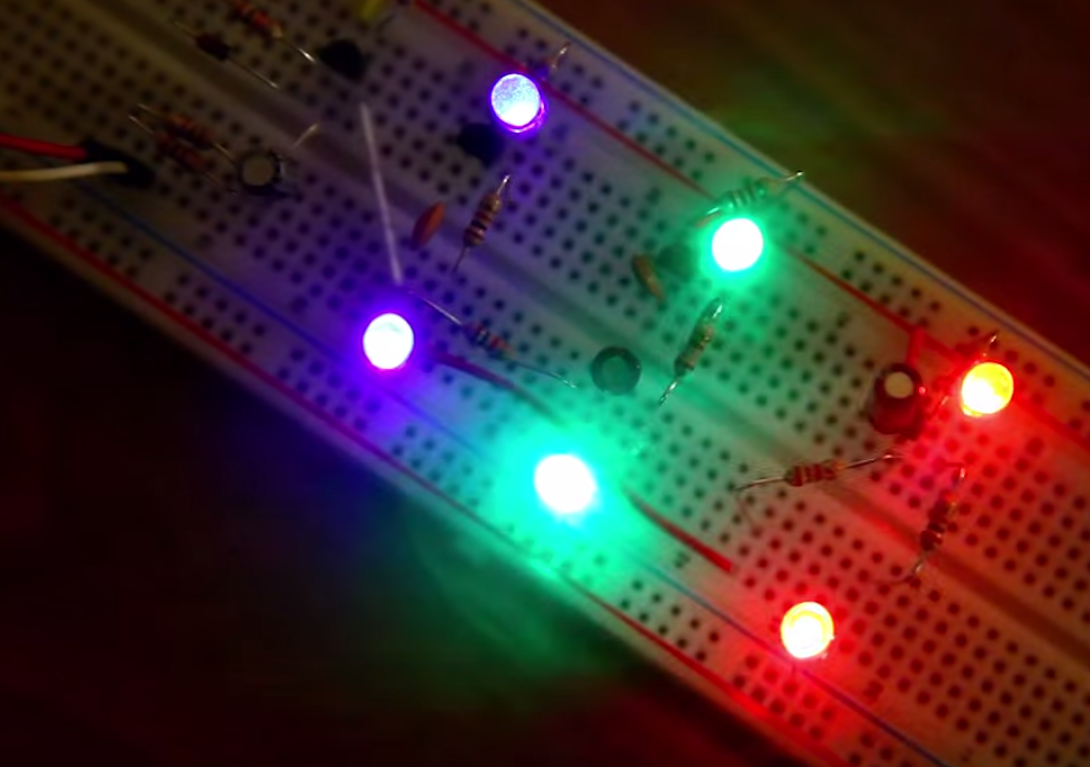If you like lights and music, you’ll have fun building this LED Color Organ. You plug your music into it, and the circuit divides the sound into high, mid, and low frequencies and then flashes 3 different colors of LEDs according to those frequencies. Blinky!
When Collin Cunningham published his fancy LED Color Organ in MAKE’s Circuit Skills video series, one reader was inspired to build a simpler circuit to achieve the same goal. Akimitsu Sadoi designed this bare-bones version that works great and uses only about 30 components. You can find the schematic right here and build it on a breadboard with no soldering required!
Assembly is broken into 4 parts:
- The audio input — the circuitry that takes the signal from the audio jack.
- High frequency — blinks the blue LEDs when high-frequency tones play.
- Mid frequency — blinks the green LEDs when mid-frequency tones play.
- Low frequency — blinks the red LEDs when low-frequency tones play.




